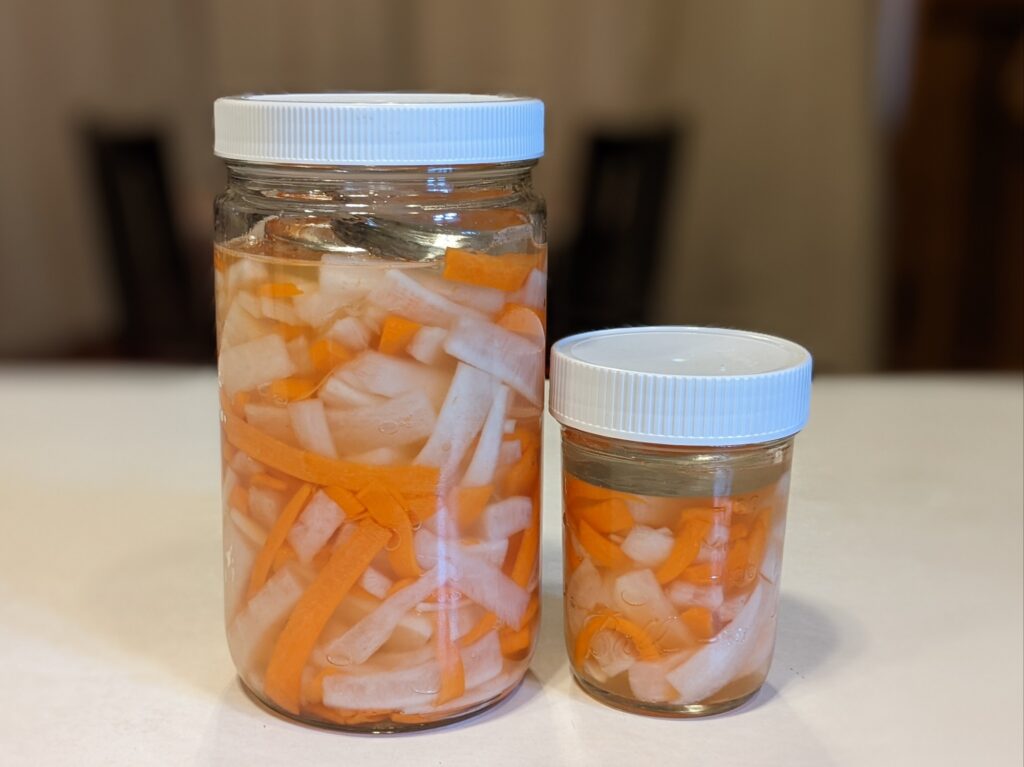
One of my favorite parts of the delicious Vietnamese sandwiches called bánh mì is the pickled veggies: they’re lightly salty, tangy, and sweet, a wonderful combination that complements the other sandwich ingredients perfectly. Also great in other dishes, like bún (vermicelli noodle bowls), this is a versatile condiment to keep on hand.
This special daikon and carrot mixture is called Đồ Chua, which basically means “pickle” in Vietnamese. It’s traditionally made with a vinegar-based brine, but when I came across a recipe to ferment them – well, you know I had to try it.
Why? Not just because I love fermenting things – fermenting veggies creates a living food full of probiotics that help maintain a healthy gut…and since an estimated 70% of our immunity resides in our guts, keeping a happy, healthy gut is always important for good health.
Making the Đồ Chua begins with peeling and chopping the daikon and carrots into “matchsticks”. I went with a roughly 2:1 ratio of daikon to carrot, rather than the 1:1 ratio called for in the recipe because I think a higher proportion of daikon is more similar to what I’ve seen in Vietnamese cuisine.
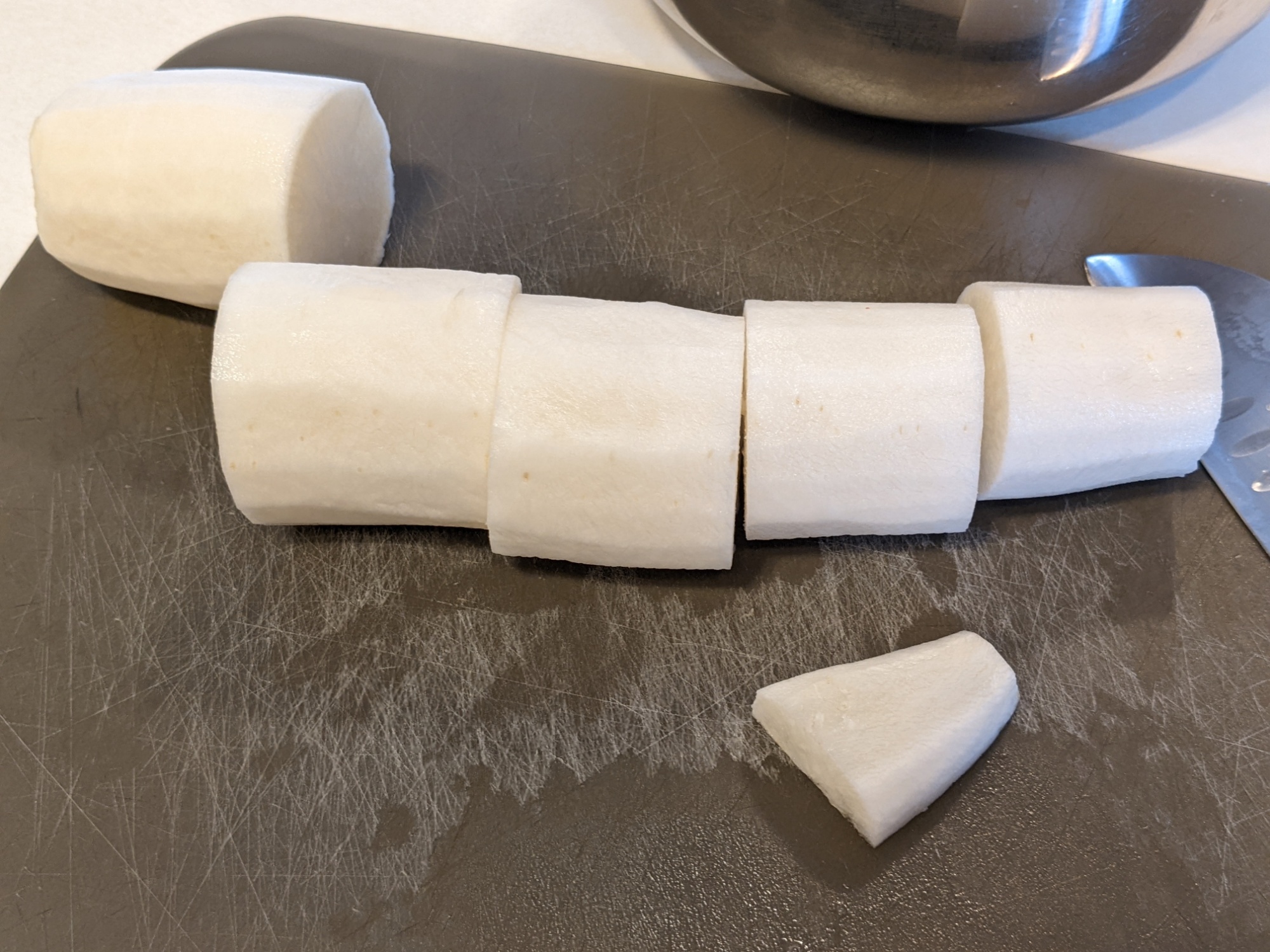
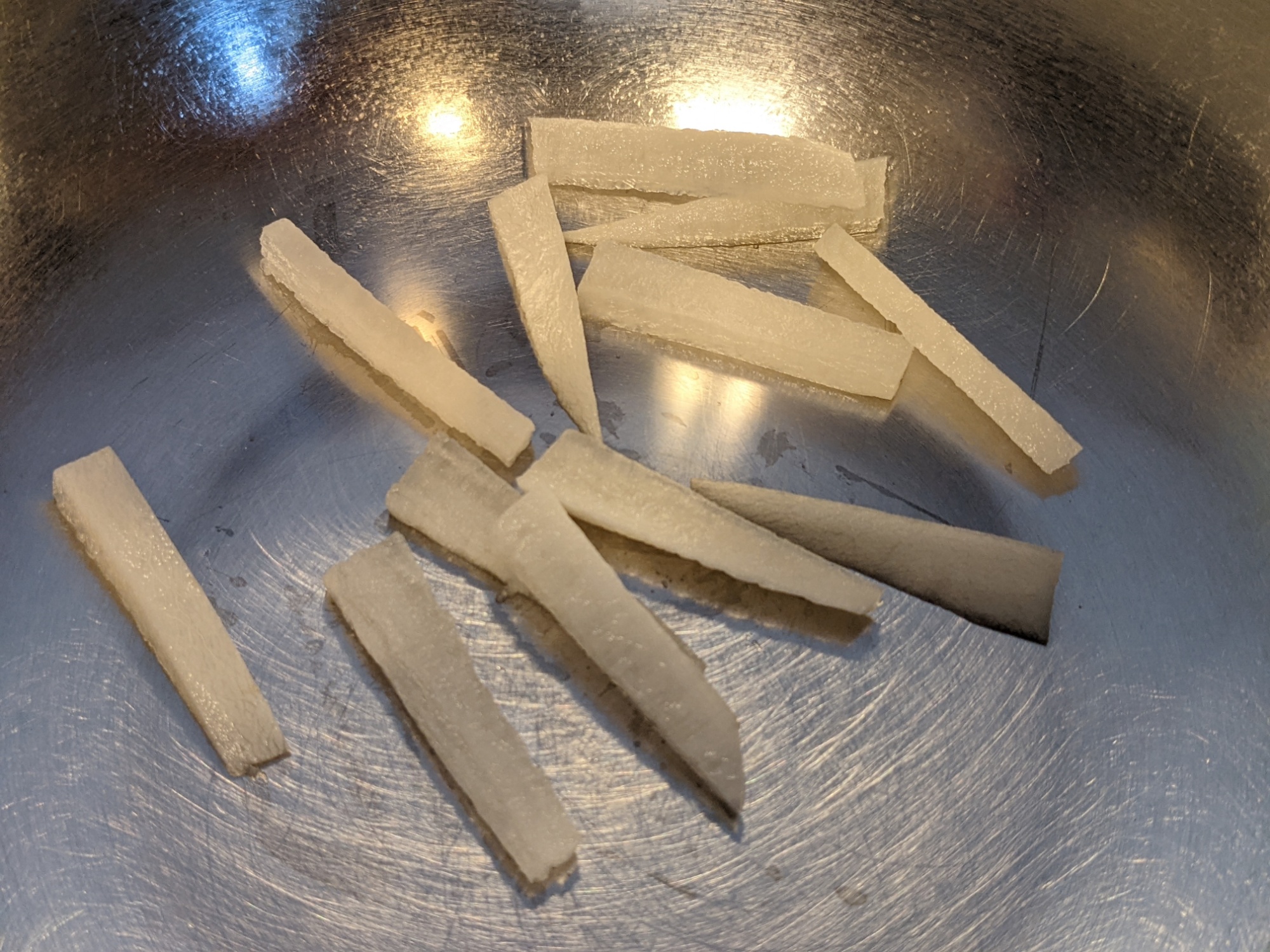
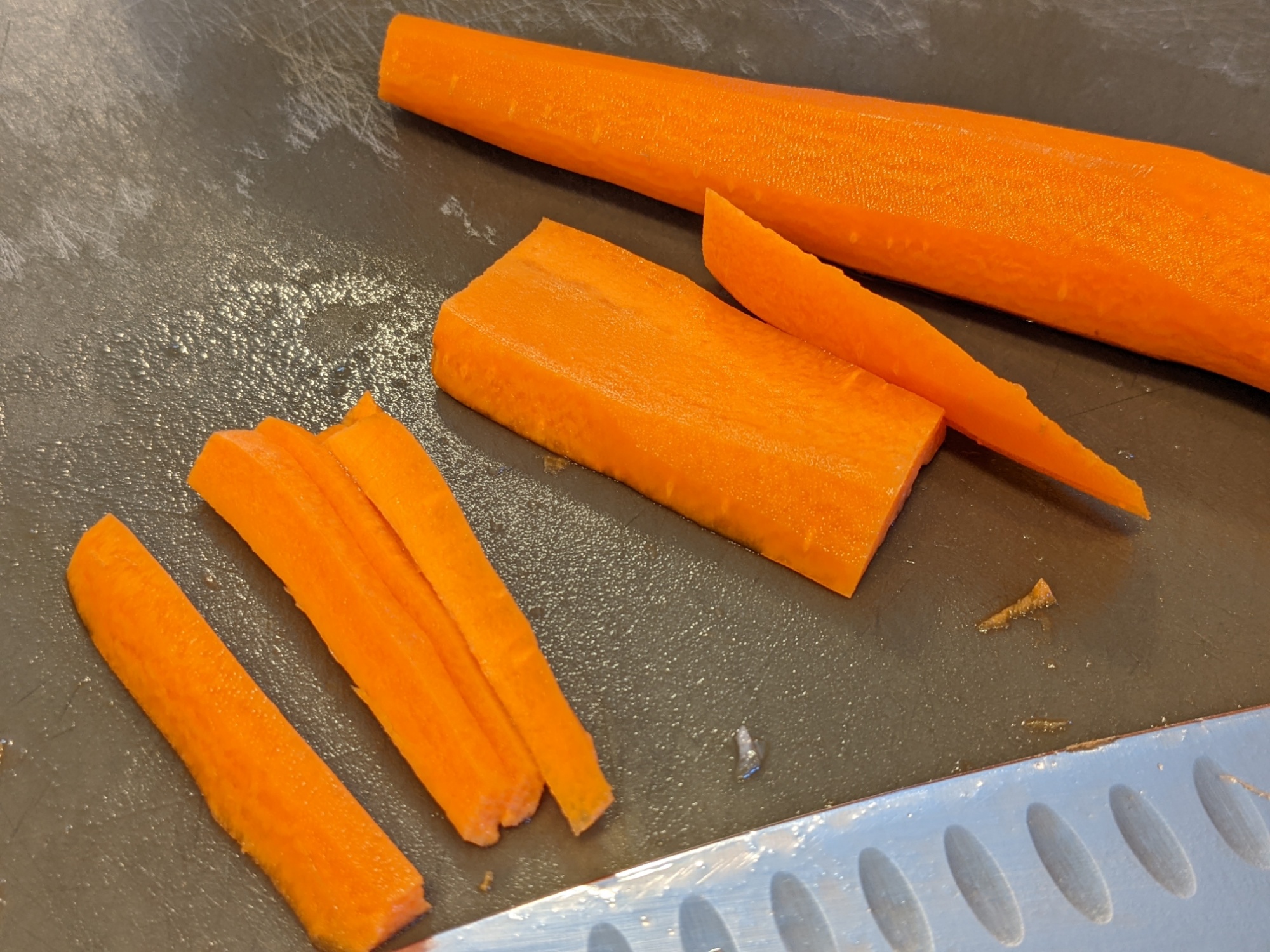
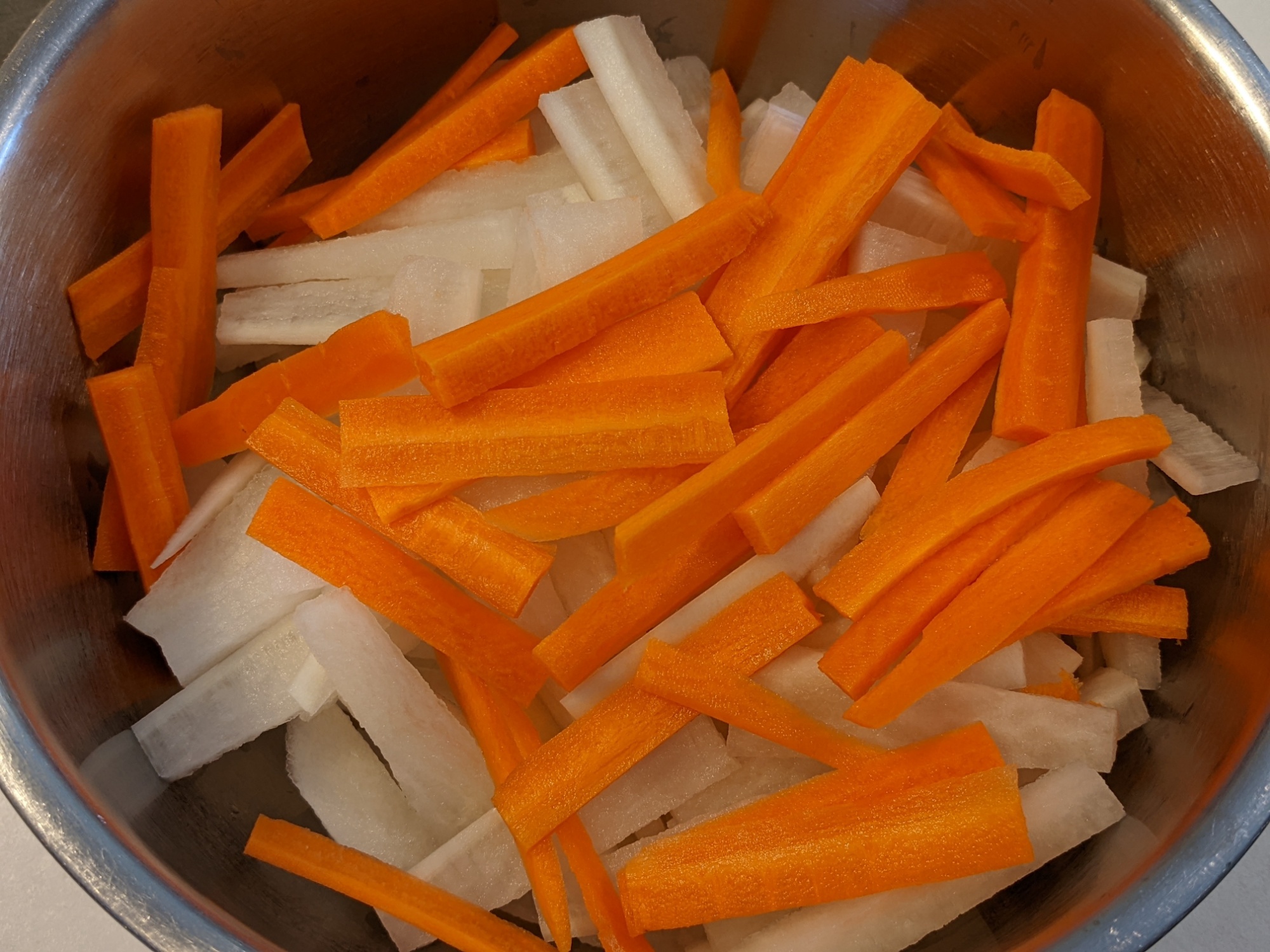
Matchsticks may be easy to do with a mandoline, but I used a knife and ended up with what looked like thick strips of litmus paper. They should work just fine, but I’m considering acquiring a julienne peeler for the task next time, for the sake of my fingers as well as for convenience. If you prefer very uniform matchsticks, the peeler would be the way to go.
Once the veggies were chopped, I added salt and sugar and massaged them through the mixture, which began releasing liquid.
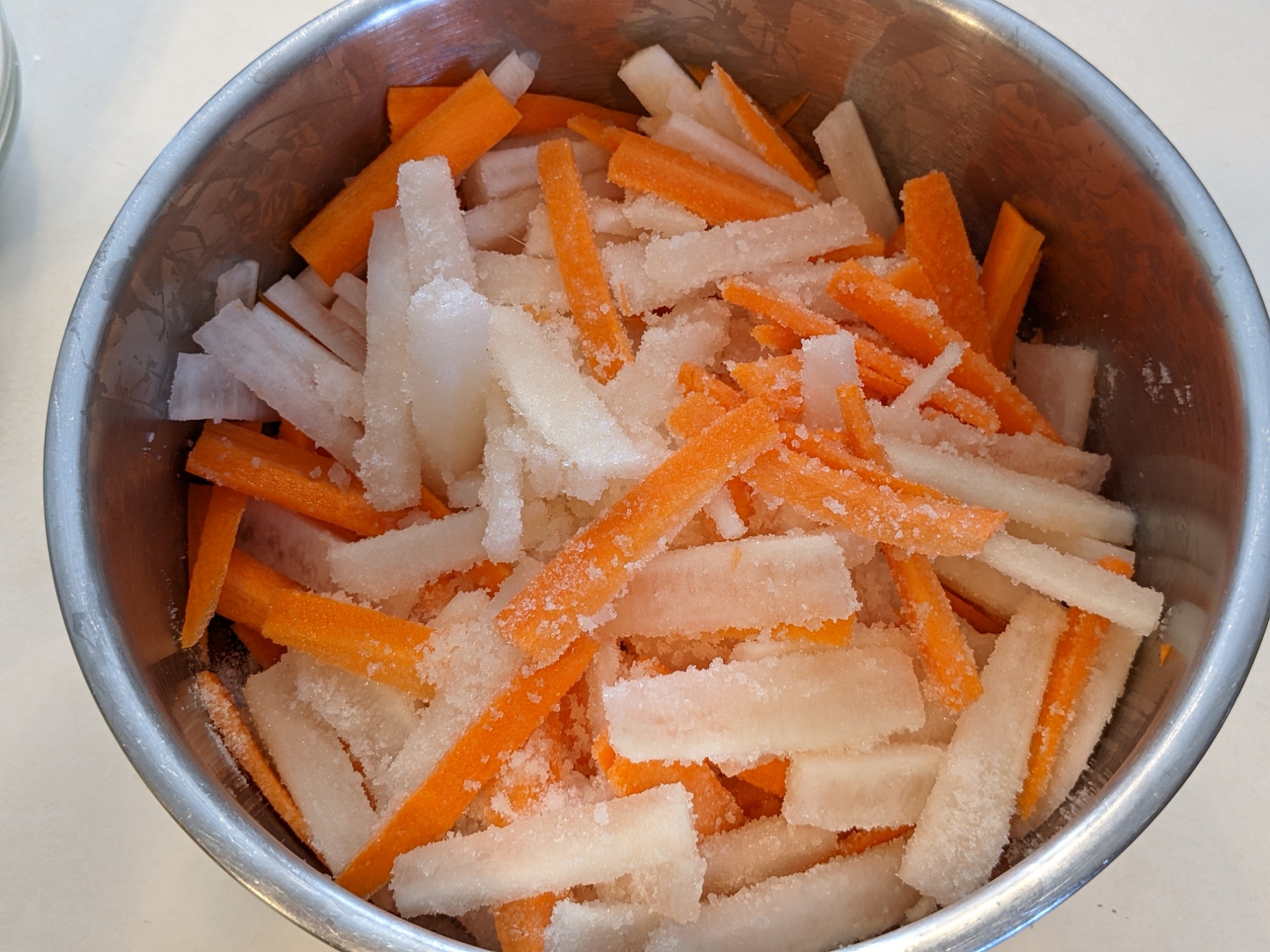
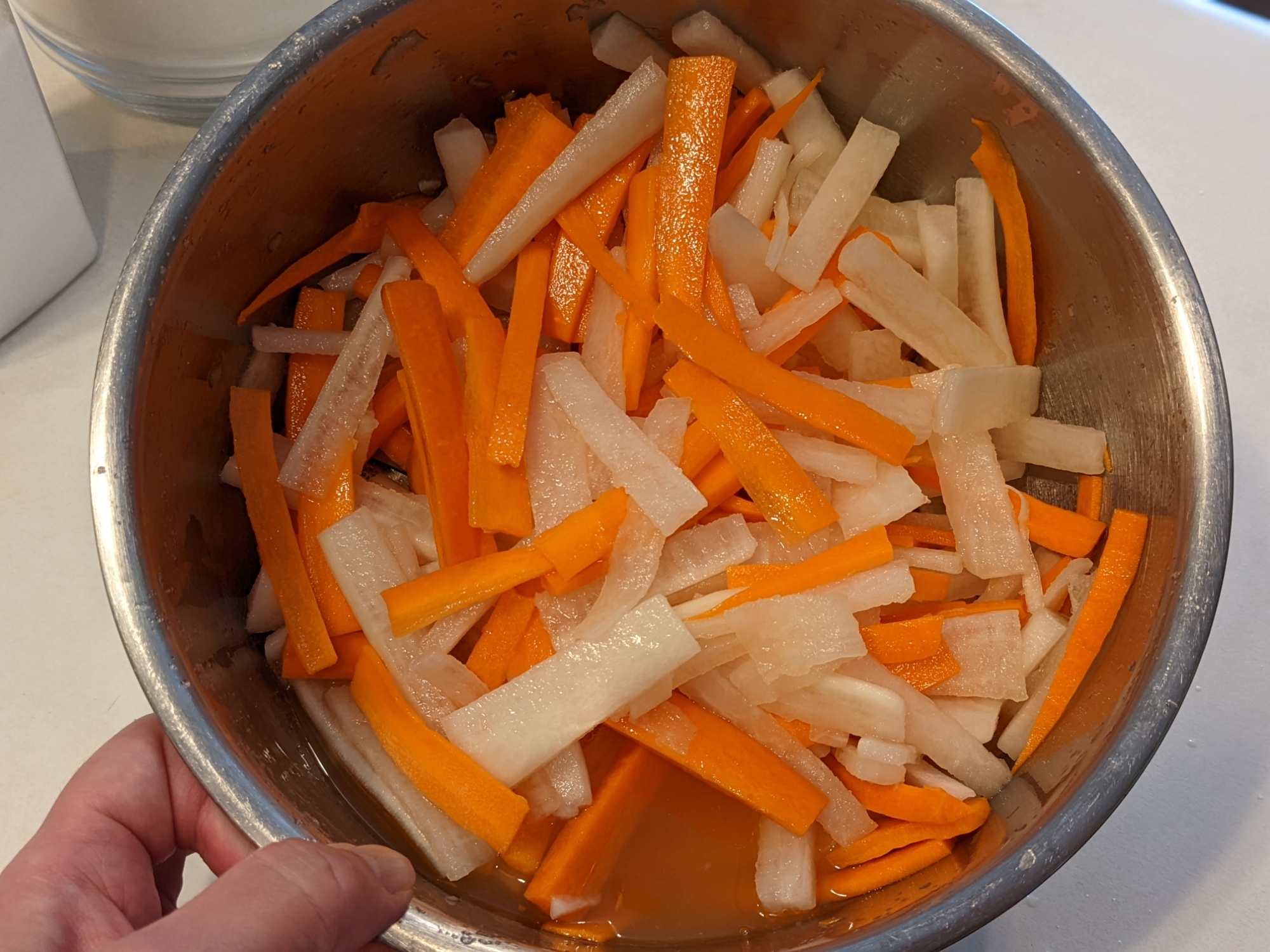
The veggies then went into jars; I packed them down with my trusty (and multipurpose, it seems) muddler and placed fermentation weights on top, to help keep them under the brine. Using a fermentation weight isn’t strictly necessary, but it helps reduce the veggies’ exposure to air and the risk of mold.
Three days later and fermentation is in full swing: bubbles have appeared, the liquid has grown slightly cloudy, and the jars have a distinctive smell – a pleasant one – of ferment when opened.
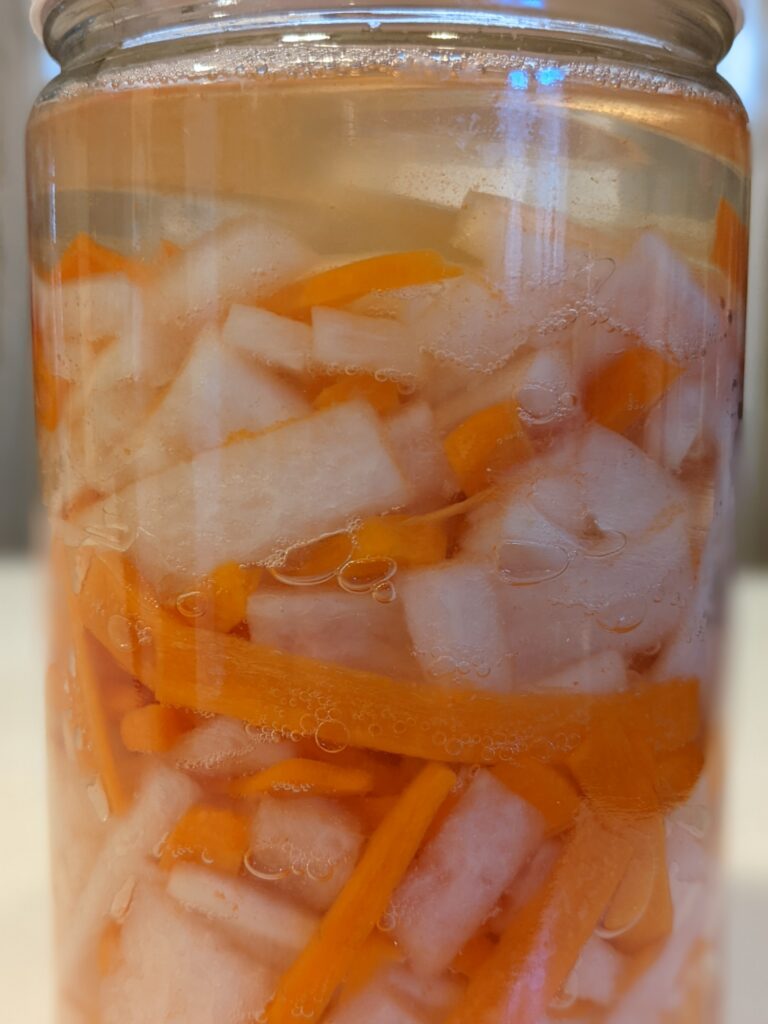
I couldn’t help but sample the ferment today, and while it’s still a bit too salty, the flavor profile is on the mark. I’ll keep checking (sampling) it until it’s just right, which should be just a few more days. Even now, though, I can envision these on homemade tofu bánh mì, adding their signature pop of flavor and crunch. I can’t wait!
